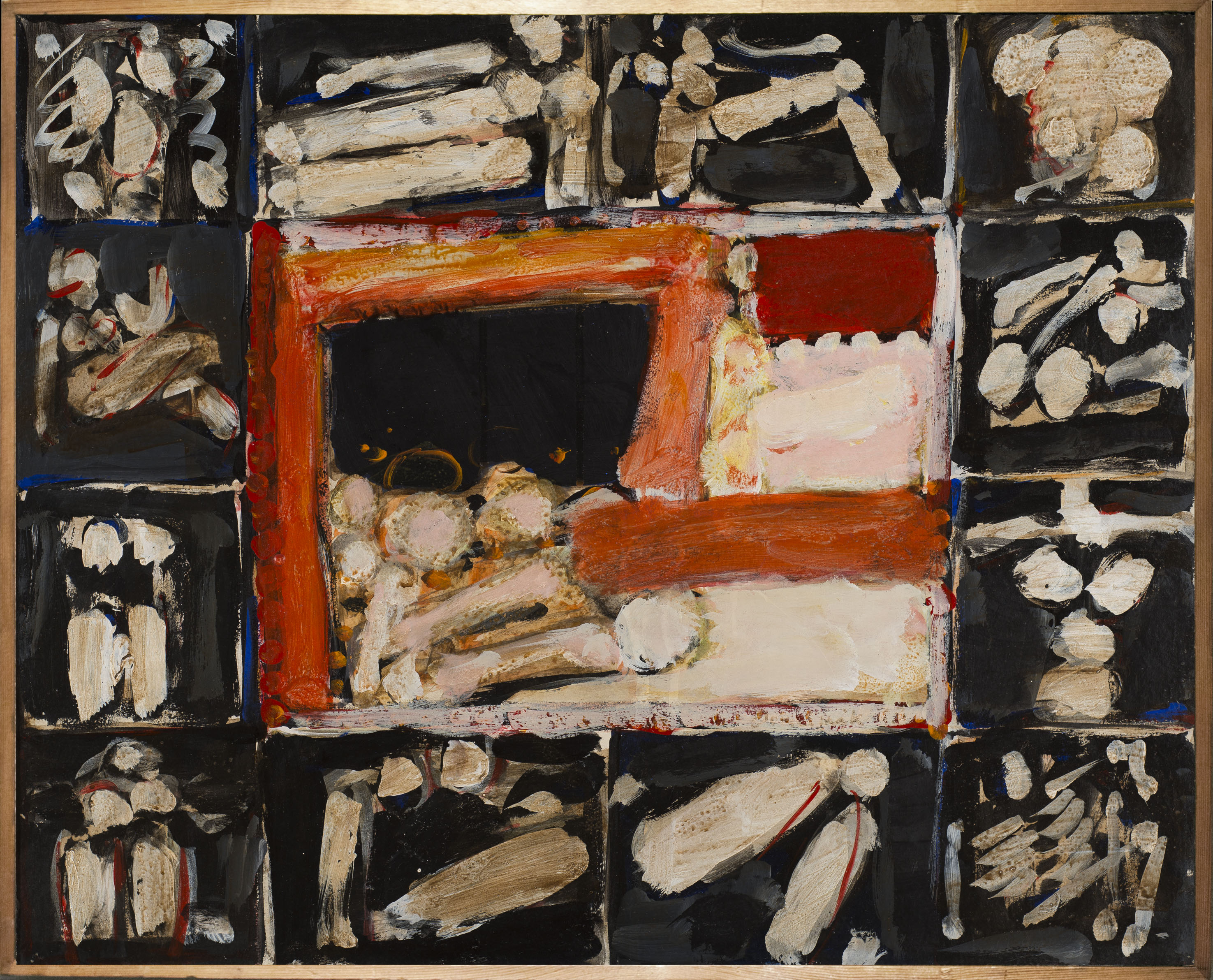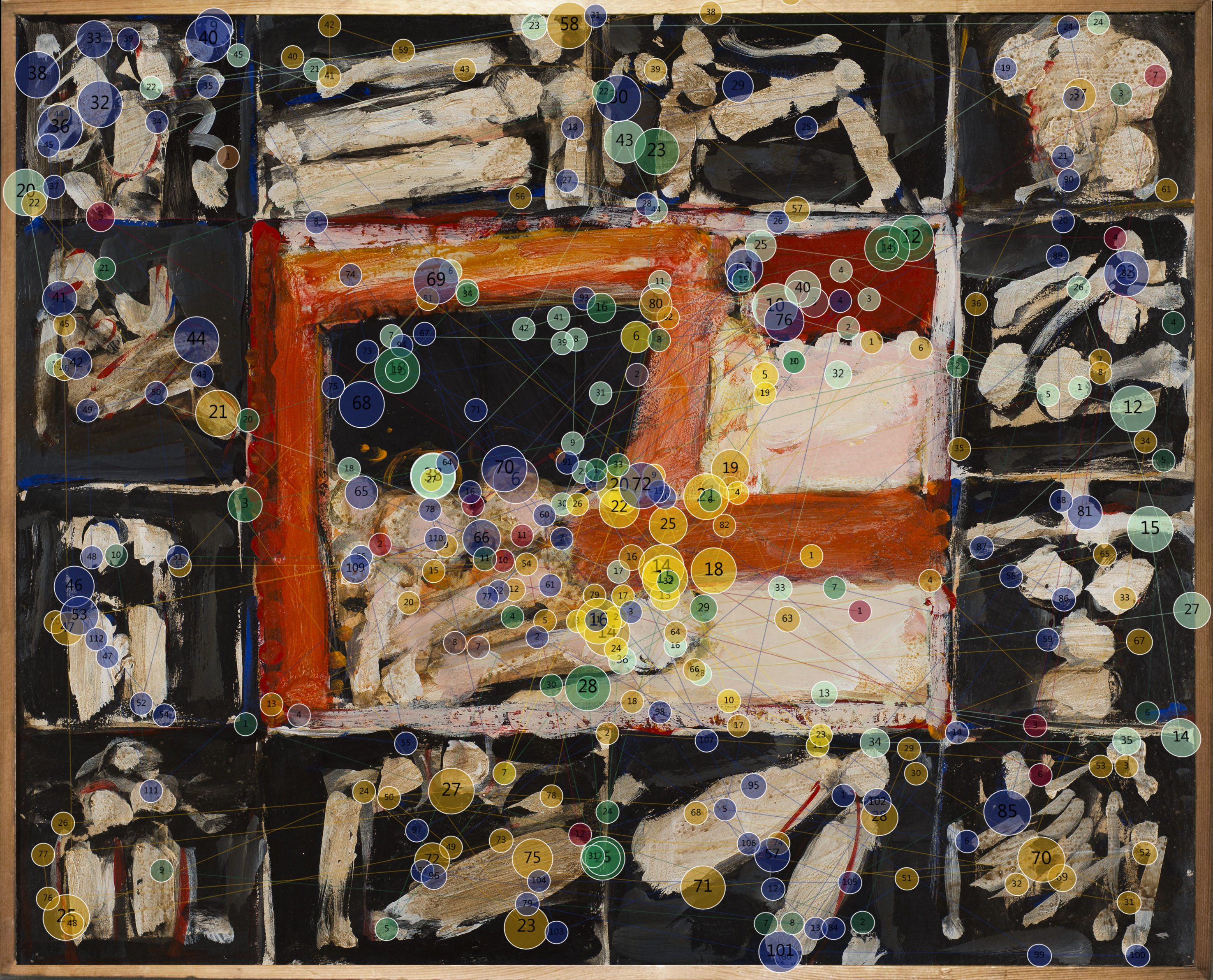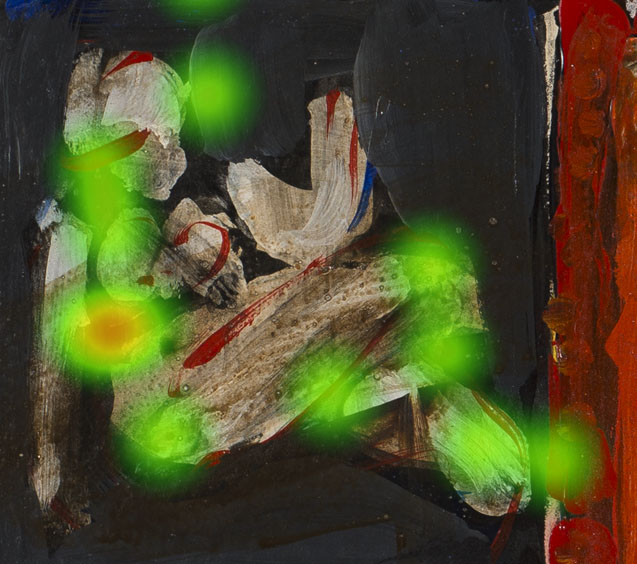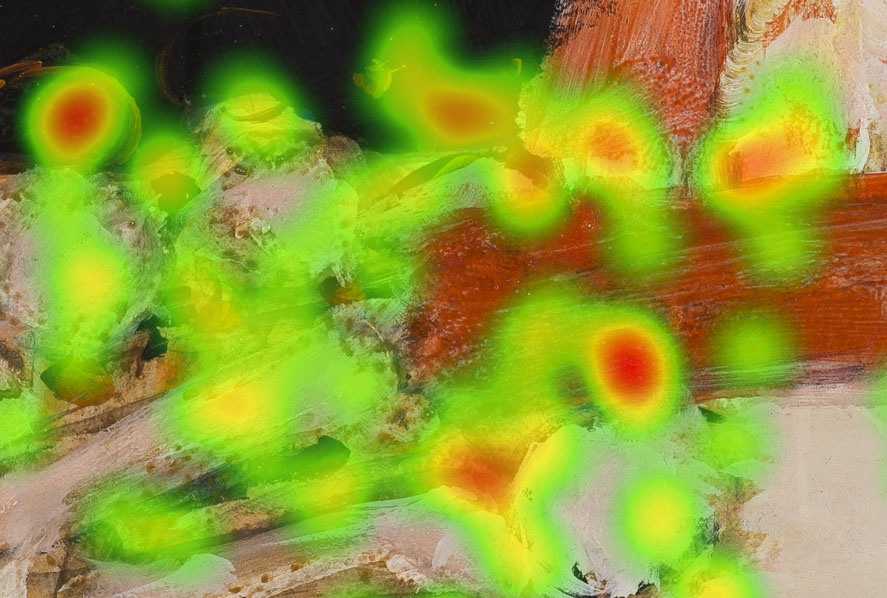
1963, oil on chipboard, 50 cm x 62 cm,
average looking time: 16,48 sec.
[…] art is something that grows beyond reality… It affects man so deeply.
It means that art involves more than there is. And influences our imagination more as well.T. Dominik
Tadeusz Dominik was a highly appreciated painter, graphic artist and educator, both in Poland and worldwide. He was born in 1928 in Szymanów, died in 2014 in Warsaw. Graduated from the Academy of Fine Arts in Warsaw, Jan Cybis laboratory. He arrived there, as he put it himself, with “a rifle on his shoulder”, straight from the war, where he learnt to sketch and draw in pencil quickly at the trenches. Dominik obtained his art professor degree in 1988. His painting is associated mainly with intense colour which, in his famous gardens, serves simultaneously as a contour, perspective, and chiaroscuro. He was often referred to as a colourist or post-impressionist. Zbigniew Herbert observed the artist’s inspiration with folk art “in the sense of […] very deep understanding of the rudiments of that art, its simplicity, freshness and vitalism”. Definitely, Dominik’s art was also influenced by his numerous travels to the USA, France and West Africa.

“Composition” is a transitional work in Dominik’s art. It is an example of a painting where, despite the colour dominance, we can still find some contour and shape. It was created shortly before a very important trip to West Africa in 1964, during which the artist observed the “wonderful nature, full of expression, and the omnipresent sun”. It was probably that experience which made him use colour as the main means of expression. Dominik claimed that work of art has its own borders, it’s locked within the frame and should not step outside. “Composition” clearly shows the central rectangle area, surrounded with a wide border from four sides, inside which we can distinguish 10 parts. Almost identical compositions can be observed in his canvas from 1963, titled “Composition with children drawings” and “Composition in a stylish frame”.


As already noted, it is very difficult to recognise the hardly outlined shapes in the central part of the canvas. One can only guess what this fragment includes since the edges of the possible figures have been almost completely reduced to coloured spots. The figures located in the surrounding rectangular parts seem a little less transformed. If we look carefully at the shapes made of single brush strokes, we will see human figures of different sex and size. They are also characterised by limited colours. After a more detailed analysis, it will turn out that each square presents a different story.
Each of us looks at the picture in a different way!
Site map
- How to use the guide
- Andrzej Wróblewski “Shooting I, Execution”
- Stanisław Borysowski “K. B. Graphic”
- Tadeusz Dominik “Composition”
- Zbigniew Makowski “Still Life”
- Anna A. Güntner “High School Graduates”
- Zdzisław Beksiński “Untitled”
- Tadeusz Kantor “Multipart – An Umbrella”
- Tadeusz Brzozowski “Favours”
- Jonasz Stern “The Moment of Light”
- Łukasz Korolkiewicz “Dwellers of Sodom”
- Interviews
PROJECT REALISED AS PART OF THE KUYAVIAN-POMERANIAN VOIVODSHIP MARSHALL SCHOLARSHIP
content & graphic design: Łukasz Kędziora | art collection photographs: Krzysztof Deczyński | translation and proofreading by Martyna Kowalska




